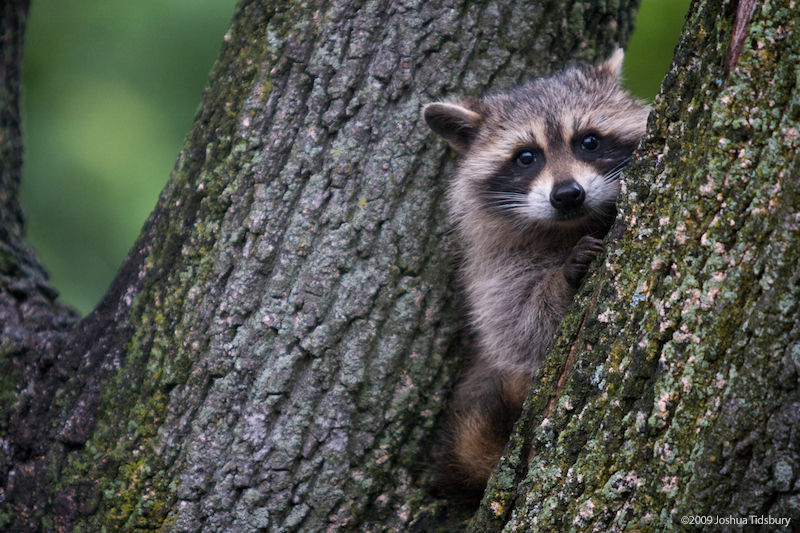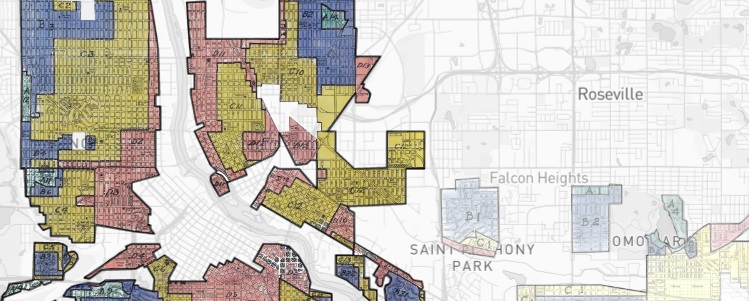
Where do you live? // Photo: Josh Tidsbury, Flickr
Systemic racism alters wildlife genetic diversity, UM study reports
Racist segregation housing practices in the USA have had a genetic impact on urban wildlife, a new study by University of Manitoba in the Proceedings of the National Academy of Sciences reports.
The research team lead by Dr. Chloé Schmidt, a recent UM graduate, examined genetic variability in different city-dwelling populations of mammals, amphibians, reptiles, and birds, and detected a consistent relationship between the genetic composition diversity of wildlife populations and the racial composition of neighborhoods. Predominantly white areas supported larger, more connected animal populations with greater genetic diversity when compared to predominantly non-white neighborhoods.

An example redlining map of Minneapolis. Interact with it online here.
A reason for this is the once government-mandated practice of “redlining”, which saw the creation of racially segregated neighborhoods. These zoning practices, although outlawed in the Fair Housing Act of 1968, created a race-based, socially-structured urban geography that persists in American cities today. For instance, on average, neighborhoods that used to be highly-graded (A) have almost double the amount of tree cover today than neighborhoods that formerly received the lowest grade (D).
“The structure of cities, partly developed from racist housing practices, creates environments that are not conducive to wildlife persistence in the long-term,” says Dr. Schmidt. “And because genetic diversity typically changes slowly in response to changes in the environment, it’s likely we’re only beginning to see the full effects of urban structure on genetic diversity. Perhaps fortunately, the effects we detected were quite weak, so we might be able to slow down or reverse genetic diversity loss by more equitably distributing natural resources like street trees and parks in cities.”
Non-white neighborhoods were—and still are—often situated next to highways, railways or even concrete walls, which all have detrimental effects not only on humans but also on wildlife, resulting in small wildlife populations that lose genetic diversity quickly. Conversely, neighborhoods that historically excluded minorities support larger, more connected populations that have better chances of persisting in the face of environmental stressors, because genetic diversity is the fuel for evolutionary change and adaptation.
On a deeper level, the results of the study suggest that segregation factors into the unequal distribution of natural resources across neighborhoods within cities, which in turn has effects on wildlife. As the study notes: “Limited capacity to support large, well-connected wildlife populations reduces access to nature and builds on existing environmental inequities shouldered by predominantly non-white neighborhoods.”
This study builds on the past work of the Population Ecology and Evolutionary Genetics Group at UM, which is headed by biological science professor Colin Garroway.
“People sometimes forget that we co-exist with and benefit from nature both in cities as well as outside of them. The magnitude of habitat change in cities is huge, and this is most often a challenge for wildlife. Given that we are the defining feature of cities, it is important to recognize that we can behave differently and enhance urban biodiversity for the benefit of people and urban species,” says Garroway.
This study was supported by a Natural Sciences and Engineering Research Council of Canada Discovery Grant, a University of Manitoba Graduate Fellowship, and a UM Graduate Enhancement of Tri-council funding grant.
Research at the University of Manitoba is partially supported by funding from the Government of Canada Research Support Fund.






